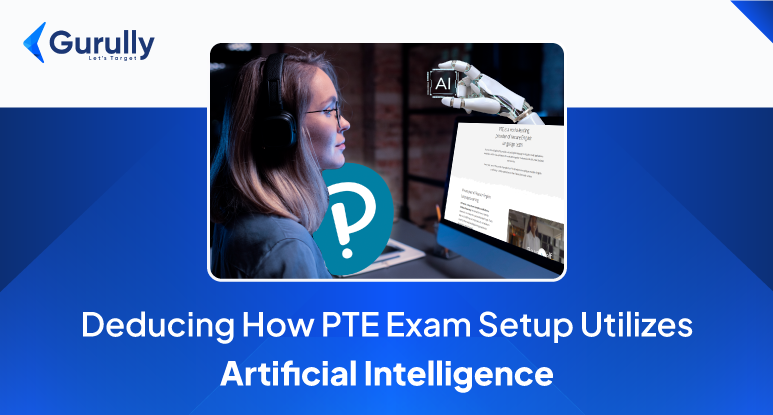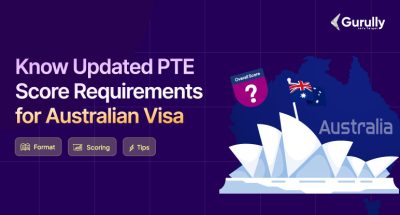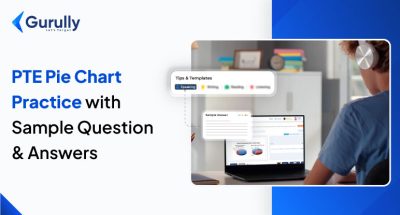Are you one of those PTE aspirants willing to reach the coveted scores? So, you have to evaluate the PTE Exam’s actual algorithm. Innumerable perceptions are there regarding such PTE’s Artificial Intelligence.
Every contender hustle about achieving the most wanted scores. Truth is, they can reach the target scores by proactively understanding the PTE’s algorithm. But, how could you know all the possible information on PTE’s AI? This article has all the answers to your problems!
Are you curious to take a brief look at PTE’s algorithm? Read the article to get a logical understanding of PTE’s algorithm.
Brief information about PTE’s Artificial Intelligence
On any specifically listed PTE website like Gurully or over the internet, the sole question that everyone keeps asking is, Are there any available sources on the internet that claim to invade the PTE’s real algorithm? The answer is simply “No!”
The major reason is that every examiner is first introduced to the communicative skills and knows the types of questions. But, a few only observe the significance and insights required to understand its enabling proficiencies.
Before getting started, let’s check out what the PTE Exam scorecard holds for you! However, it would be best to stay focused to obtain your targeted scores in Enabling and communicative skills. Follow the top three steps, which are shown below:
Step #1: Understand the significance of enabling proficiencies that affect the Software for Scoring (80%)
The top-notch six enabling skills are there, which are:
Fluency: A clear and consistent voice tone
Grammar: Flawless Grammar while saying more complex sentences
Spelling: Follow the spelling rules while writing
Written Discourse: Appropriate word length and punctuations
Vocabulary: Writing Academic words
Pronunciation: Speak transparently
Step #2: Know all the questions types of communicative skills and concentrate more on associated tasks
There are various modules in the PTE Exam Enabling test, which are:
- Repeat sentence: You’ll hear a sentence and repeat it back accurately.
- Retelling lecture: You’ll listen to a lecture and then retell the key points in your own words.
- Answering short questions: You’ll answer short questions based on a listening passage.
- Summarize spoken text: You’ll listen to a recording and summarize its main ideas.
- Multiple choice, single answer: Similar to reading, but with audio recordings and questions with only one correct answer.
- Multiple choice, multiple answers: Similar to reading, but with audio recordings and questions with potentially multiple correct answers.
- Fill in the blanks: You’ll listen to a recording with missing words, and you’ll choose the most fitting option based on context.
- Listening: Fill in the blanks (or Select missing word) might be another way to describe this task.
- Highlight correct summary: You’ll listen to a recording and choose the sentence that best summarizes it.
- Highlight incorrect words: You’ll listen to a recording and identify grammatically incorrect or nonsensical words.
- Read aloud: You’ll be asked to read a passage of text out loud, typically assessed for pronunciation and fluency.
- Describe image: You’ll be shown an image and asked to describe it in your own words, testing your vocabulary and ability to describe visual information.
- Fill in the blanks: Passages will have missing words, and you’ll choose the most fitting option based on context and grammar. (This might be called “RW: Fill in the blanks” or “Reading: Fill in the blanks” depending on the test).
- Multiple choice, single answer: You’ll read a passage and answer questions with only one correct answer option.
- Multiple choice, multiple answers: Similar to above, but you may choose multiple correct answers from a list.
- Reorder paragraph: You’ll be given a jumbled paragraph and need to reorder the sentences for a logical flow.
- Summarize written text: You’ll read a passage and condense its key points into a shorter summary.
Important PTE Preparation Tips
- Build familiarity with the test format so you know exactly what each task expects and how scoring works, especially for integrated tasks like Speaking and Writing.
- Practice with high-quality mock tests to improve timing, fluency, and confidence under real exam conditions.
- Strengthen core English skills—listening accuracy, reading speed, speaking clarity, and writing structure—because PTE scoring rewards consistency across all modules.
- Focus on high-weight tasks such as Read Aloud, Repeat Sentence, Describe Image, Re-tell Lecture, and Write Essay, as they significantly influence your overall score.
- Review your performance regularly, identify weak areas, and use targeted practice rather than repeating random questions.
Step #3: Understand how to do software assessment
The software contains more than 10000 writing sample answers. Moreover, it has also preserved over 10000 recorded voices in distinct accents. This software analyzes your writing to a large number of samples. Therefore, again evaluate your score range in terms of the given performance.
In order to grasp better, refer to the example below:
Let’s take the example of two candidates who appeared for PTE writing, where one of the candidates scored 90 and the other one obtained 78. Hence, the first candidate has explicitly mentioned all the complex sentences and also used correct punctuations.
Moreover, he/she may also have maintained the necessary word count. In comparison, the other candidate may have missed out on any of the aforementioned factors. So, this has made the software compare the stored write-ups.
Therefore, the write-up submitted by the second candidate would not have fulfilled the comparison criteria.
Start your free PTE mock test with Gurully and get AI-powered analysis for a personalized journey.

- Kickstart your PTE prep with a free AI-scored mock test
- Boost your score with in-depth analysis & smart recommendations
The Final Say
It is expected that the article is helpful enough to mitigate your curiosity based on understanding the PTE fundamentals and also the algorithm. Do you want to gain more insightful knowledge about the PTE exam and the algorithm? You may turn to the best AI-enabled PTE exam practice platforms, like Gurully, in order to study well for your PTE examination.
FAQ:
What is the PTE exam?
Is PTE exam easier than IELTS?
What is the cost of PTE exam?
How much is 7.5 in PTE?
Is 70 a good PTE score?
Also Read:
- PTE Accepted Universities In USA
- PTE Reading Multiple Choice, Multiple Answer – High Scoring Tips
- Introduction In PTE – Things You Need To Know For Making A Strong Impression





